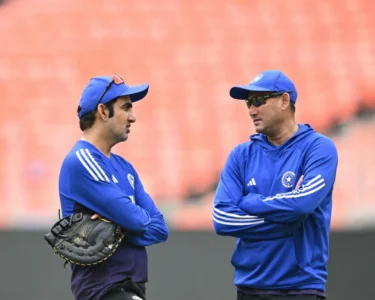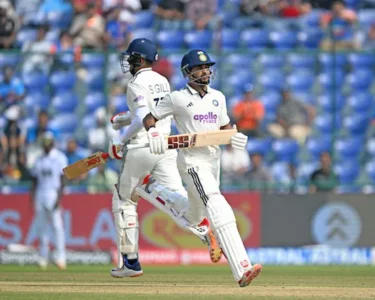Veteran Indian cricket legend Sunil Gavaskar has offered a pointed and thought-provoking response after Ravichandran Ashwin recently remarked that he “could’ve groomed players like Virat Kohli and Rohit Sharma” if he had been given a more central leadership role earlier in his career. Ashwin’s comment, which sparked widespread discussion among fans and experts, hinted at the idea that his experience, cricketing intelligence, and understanding of the game might have helped shape the next generation of Indian cricketers—especially during the transition era when stalwarts like Kohli and Rohit were establishing themselves.
Gavaskar, known for his sharp analysis and straightforward approach, addressed Ashwin’s statement with a balanced yet subtly critical viewpoint. According to him, while every senior player has the right to believe they can contribute to grooming emerging talents, the grooming process in Indian cricket is neither the responsibility nor the burden of one individual. Instead, it is a collective ecosystem involving coaches, captains, senior players, and domestic structures. Gavaskar highlighted that players like Kohli and Rohit were already exceptional young talents who rose through the system on the strength of their own performance, discipline, and hunger for success.Gavaskar’s measured yet firm reaction has ignited fresh debates among fans about leadership dynamics in Indian cricket. Many argue that Ashwin, with his tactical sharpness, could indeed have shaped young players if entrusted with a bigger leadership role. Others believe that Kohli and Rohit—who eventually became iconic leaders themselves—required no grooming beyond the powerful mentorship they received from Dhoni and other senior pros.
Reflecting on Ashwin’s sentiment, Gavaskar pointed out that cricket is a team sport where leadership develops organically. A player may possess the intelligence and temperament to guide others, but such opportunities depend heavily on team composition, the direction set by the management, and the specific roles assigned at the time. He subtly hinted that Ashwin, despite being one of India’s most accomplished spinners, may not have been in a position—either strategically or hierarchically—to influence the early careers of Kohli and Rohit in the way he imagines today.
Gavaskar also underscored that grooming is not merely about providing technical advice. It involves consistent leadership presence, emotional support, decision-making responsibilities, and a long-term vision—areas that usually belong to captains and designated leaders. While he acknowledged Ashwin’s cricketing brilliance, he questioned whether the spinner had a sufficiently stable phase in his early international years to take on such mentorship roles. Team India, during that period, already had strong leadership figures like MS Dhoni and senior veterans whose influence shaped the team’s culture.
However, Gavaskar did not dismiss Ashwin’s thoughts entirely. He praised the off-spinner’s passion for cricketing growth and acknowledged that Ashwin has always been a cerebral player—someone who constantly seeks to understand the sport deeper and help others evolve. His desire to groom players, Gavaskar suggested, reflects his genuine commitment to the team environment. Yet the former captain reiterated that the rise of Kohli and Rohit was largely self-driven, supported by established structures and guided by the leaders of that era.
Gavaskar’s measured yet firm reaction has ignited fresh debates among fans about leadership dynamics in Indian cricket. Many argue that Ashwin, with his tactical sharpness, could indeed have shaped young players if entrusted with a bigger leadership role. Others believe that Kohli and Rohit—who eventually became iconic leaders themselves—required no grooming beyond the powerful mentorship they received from Dhoni and other senior pros.
The conversation highlights the complexities of leadership within Indian cricket, where talent, opportunity, timing, and roles intersect in unpredictable ways. Gavaskar’s response ultimately serves as a reminder that Indian cricket’s success story is a collective effort, shaped by contributions from numerous pillars of the game—past and present.







